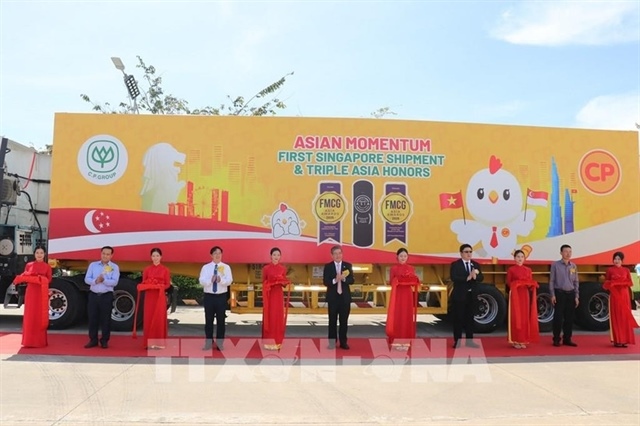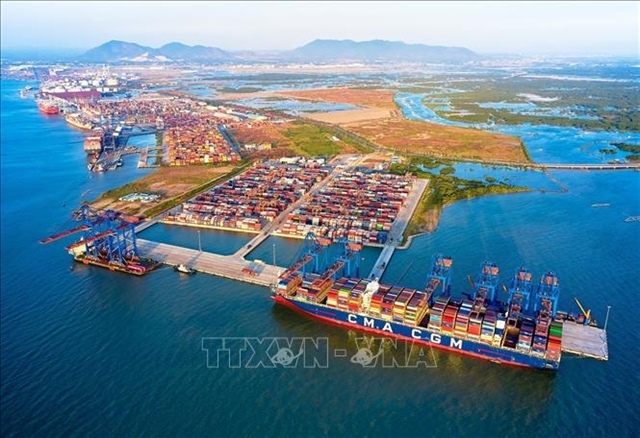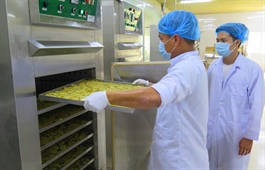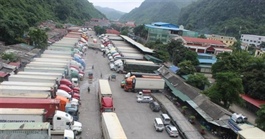Viet Nam's agricultural produce to China fully traceable
Viet Nam's agricultural produce to China fully traceable
Viet Nam’s agricultural produce sent to China are, including those sent via unofficial channels, quality products. Quality has no bearing on them being stopped at customs, Deputy Minister of Agriculture and Rural Development Tran Thanh Nam told the ministry’s meeting on Wednesday in Ha Noi.

He said most export products were complied with regulations on animal and plant quarantine, having traceability and growing area codes, and the issue on the Chinese side was stricter COVID-19 controls in the neighbouring country.
At the meeting to discuss promoting agricultural exports, Nam said the ministry had now granted nearly 2,000 planting area codes for exported agricultural products to the Chinese market, or more than 60 per cent of the total planting areas. For example, they have issued 247 codes for dragon fruit, accounting for 85 per cent of the growing area in Viet Nam.
MARD leader said the ministry had worked with China to allow their customs clearance to resume at border gates popular for Vietnamese exporters, in Mong Cai in Quang Ninh and Tan Thanh in Lang Son Province.
"Even when China has reopened some border gates, they can close them at any time if export products are found infected with the SARS-CoV-2 virus on the packages,” Nam said.
As the Tet (Lunar New Year) holiday is coming, some border gates will be closed for at least a week for the holiday. Nam asked businesses to consider this as getting goods through the gates would be very difficult.
Nam said MARD’s many inspection and quarantine centres had prepared equipment testers to check for virus on goods, to help businesses with agricultural exports.
At the same time MARD and the Ministry of Transport (MoT) and the Ministry of Industry and Trade (MoIT) will organise a meeting on the export of agricultural produce via sea transport.
Nam said: "The possibility of transporting agricultural products by sea is taken into account, not only for export to China but also other countries."
Nguyen Thanh Tung, deputy director of the Department of Crop Production, said that in the first quarter of 2022, the provinces of Binh Thuan, Long An, and Tien Giang needed to export about 100,000 tonnes of dragon fruit, or about 5,000 containers via sea.
Tung said sea transportation also faced with difficulties as costs were three times higher than before while a lack of refrigerated containers and ships to export via sea and the long transit time could affect quality of the products.
The Chinese side's strict control of COVID-19 at seaports would add to the matter as it may cause slow loading and unloading, and spoiled fruit.
Nguyen Xuan Sang of the MoT said that since December 2021, the number of containers transported was 4,000, nearly three times higher than in November.
Sang pointed out the difficulties in converting from land to sea transport, saying: “First, the export must be with official quota, while much fruit trading is not via official channels. Secondly, the cost of transportation can increase to an uncontrolled level, because businesses have to bear an additional fees for empty containers to Viet Nam.”
Sang also said a strict policy of "Zero Covid" was applied to sea routes so the speed of customs clearance by sea was not necessarily faster than by road.
He said there were signs of congestion in some wharfs for agricultural produce in China's seaports for about a week, thus through exporting by sea, domestic enterprises may incur additional storage fees.
Le Quang Trung, deputy general director of Vietnam Maritime Corporation (VIMC), said it would study and consider the exemption and reduction of shipping fees for businesses to support dragon fruit consumption and other agricultural produce.
On the same day, the MoIT held a meeting discussing the congestion of thousands of containers of agricultural produce exported to China.
Nguyen Cam Trang, deputy director of the Import-Export Department, said that in the past two years, despite the pandemic, the export of agricultural products to the Chinese market was still very positive, with a growth rate of 18.3 per cent.
She said, however, the negotiation on quarantine between the two sides was still slow, making a problem for Vietnamese fruits in the Chinese market, adding that 100 per cent of Vietnamese fruits exported to China had to be quarantined, while Thailand only has to quarantine 30 per cent.
Trang said the MoIT had organised working groups to border provinces to grasp the situation and find immediate solutions.
The ministry and the Ministry of Foreign Affairs have worked with China to make an agreement on the delivery process.



























